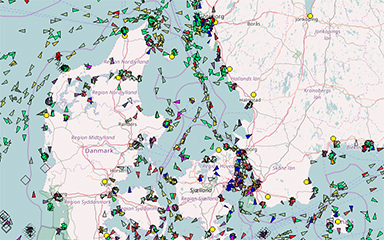The Danish Maritime Authority has previously published historical Danish AIS data covering the period 2014-2016, and now they open up for even more historical data as data from 2006 to 2014 are made available. The historical data are a supplement to the current solution with access to live AIS data.
All files are available for free from the Danish Maritime Authority’s website. These historical AIS data will be available for the next six months and, subsequently, they will be removed from the website. The data quantity is very comprehensive and will require large storage capacity if data are to be available for ever.
In the future, it will be possible to retrieve AIS data for the recent two running years. These AIS data are also available from the website of the Danish Maritime Authority.
Deputy Director General Troels Blicher Danielsen from the Danish Maritime Authority:
”Now that we open up for even more historical AIS data, it is our hope that Blue Denmark can use these AIS data to make analyses, services or new products.”
AIS data are stored as so-called CSV files. In order to use the historical AIS data, you need a special application capable of processing and converting data into a user-friendly presentation. Historical data can be used for, for example, analyses of navigational patterns, etc.
The Danish Maritime Authority no longer makes analyses, etc. for external users. For this purpose, reference is made to private players in the market.
AIS is short for Automatic Identification System. AIS is a VHF-based navigation and anti-collision tool making it possible to exchange ship-to-ship information. This information – AIS data – is furthermore collected in a shore-based AIS system that is operated by the Danish Maritime Authority.
On the following ships, an AIS transponder is a carriage requirement:
- All ships above 300 gross tonnes
- All passenger ships
- All fishing vessels with a length above 15 metres.
Smaller vessels can be fitted with class B AIS equipment – but it is not a requirement.
Source & Image credit: DMA






























































